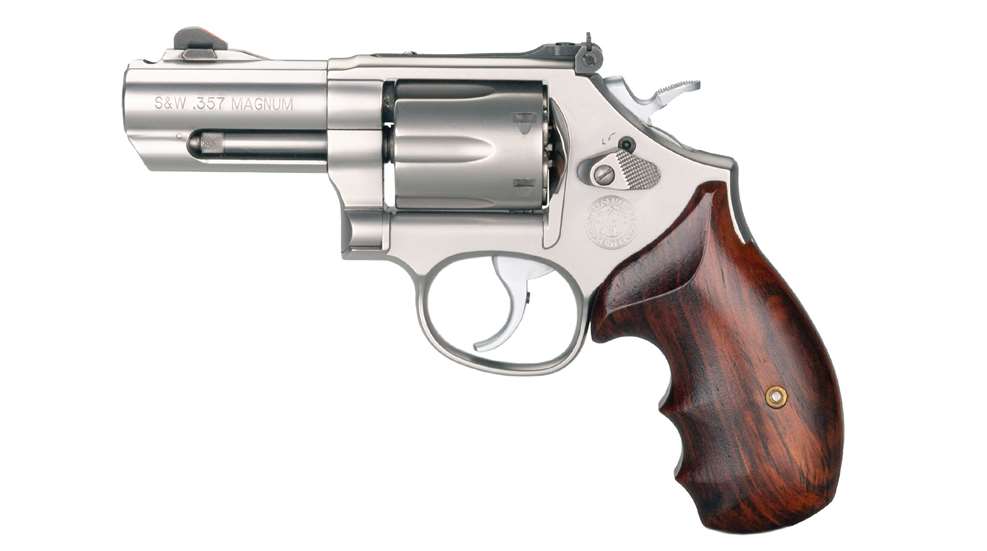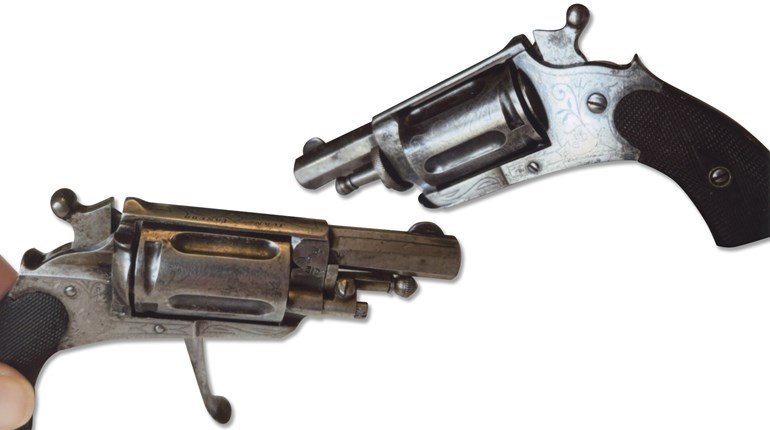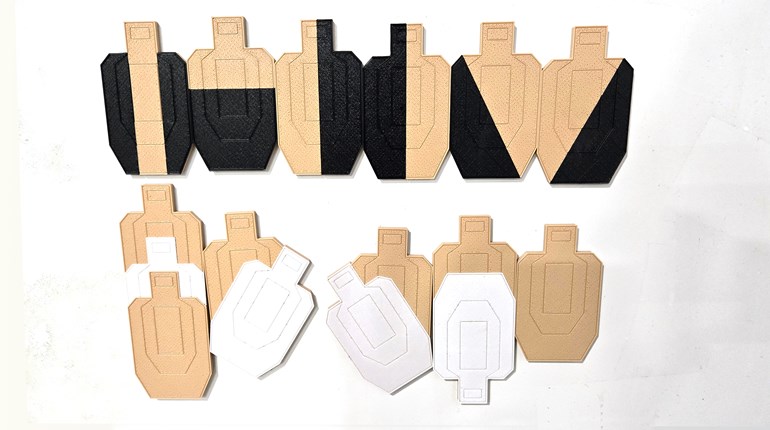
The greatest path to success with the double-action revolver is learning to manage the trigger. But, a lot more goes into that endeavor than just what happens between the trigger finger and the gun’s trigger. To truly be proficient with the double-action revolver, the shooter needs to consider gun size, stock selection and the shooting grip—and to practice.
Today’s firearm manufacturers are doing some interesting things with various metals and polymer to produce some really lightweight revolvers. However, these ultralight guns are best suited for specific defensive assignments—such as deep-cover concealment—and may not be the best choice for a person’s primary defensive handgun. Certainly, there is the concern of managing the heavy recoil that results from using the proper defensive ammo. One is also putting 8 to 12 pounds of pressure on the trigger of a 12-ounce handgun and expecting it not to move off target during the process. You don’t have to be a physics major to understand the problem and challenge.
The simple fact is that most folks are better suited for—and will do much better work with—at least a medium-frame revolver. More importantly, this size gun will fit the hand better and the felt recoil will be much more manageable. For example, I usually carry a K-frame Smith & Wesson and reserve my Smith Model 442 for those few times when I simply can’t carry anything bigger. The larger the revolver, the better it will fit the shooter’s hand and improve trigger management.
Another factor in mastering the double-action trigger is the selection of stocks (the proper term for a wheelgun’s grips) that truly fit the shooter’s hand. True, some shooters are blessed with being able to get along with factory stocks, but most of us have had to look elsewhere. Get around a group of experienced revolver shooters, and one will quickly notice that most of the guns sport aftermarket stocks, and the few that don’t will generally have had a grip adapter added.
One is also putting 8 to 12 pounds of pressure on the trigger of a 12-ounce handgun and expecting it not to move off target during the process. You don’t have to be a physics major to understand the problem and challenge.
We are fortunate—again, thanks to manufacturers—that there are plenty of aftermarket revolver stocks from which to choose. Thicker, thinner, soft ones, hard ones, checkered, smooth, with finger grooves and without, the selection of revolver stocks is quite varied. The benefit for the shooter is that, through trial and error, one can find a set of stocks that fill the shooting hand and allow the shooter to really clamp down on the gun to keep it from moving in the hand during the trigger press.
Right in line with properly fitting stocks is the need for the shooter to exert an effective shooting grip on the gun. The most effective grip is the same one that can be seen in photos of Ed McGivern, Elmer Keith and Bill Jordan. The shooting thumb is turned down in a manner that it is almost touching the tip of the trigger finger. The support hand is situated in such a way that the support thumb rides on top of the shooting thumb and adds to the downward pressure. The overall results should be a strong grip that is just one notch below being a white-knuckled grip.
Lately, a thumbs-forward grip has become popular among handgun shooters. While a good choice for semi-automatics, it is a mistake where fast shooting with double-action revolvers is concerned. When we take hold of something with the intention of really hanging onto it, we don’t stick our thumbs out in the air, we roll them down to get the strongest grip. And a strong grip is an important aid to trigger management, particularly with defensive ammunition.
The trigger press itself should be one long, continuous movement until the shot breaks, and dry practice is a good way to develop this technique. The double-action revolver shooter can’t spend enough time on dry practice. The goal is to press the trigger until the action cycles and the gun snaps—without allowing the sights to move off target.
An added benefit to dry practice is that the continuous cycling of the gun will smooth up the action and make the double-action trigger press even easier. In the case of some brand-new guns, it might be a good idea to have a gunsmith do an action job to smooth it up, or consider installing some aftermarket springs. Just be sure that the gun will still function properly with the chosen defensive ammunition when firing in the double-action mode.
So, clearly, a lot more goes into having success with the double-action revolver than just learning to run the trigger. The larger the gun the better, assuming it is close to fitting the individual shooter’s hand. The selection of stocks that better fit the individual and developing a strong shooting grip for double-action work will add to that success. Then it is just a matter of practice, practice, practice.
You and I may never be the next Bill Jordan or Jerry Miculek but, with due attention to the challenge, we will find that the double-action revolver is a worthy defensive companion.




































